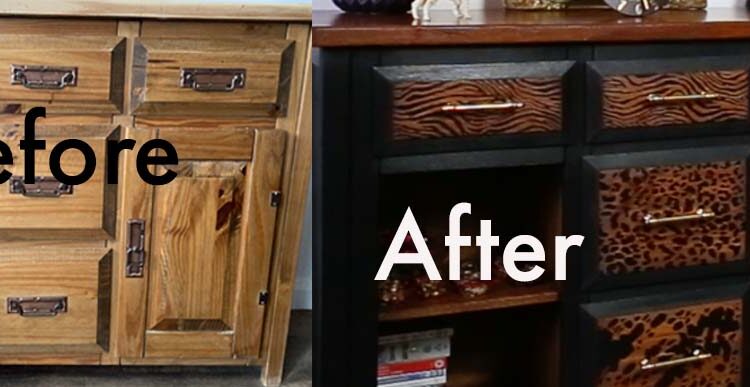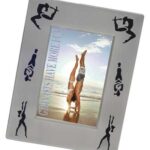
I. Understanding Upcycling: What It Is and Why It Matters
II. Essential Tools and Materials for Furniture Upcycling
III. Step-by-Step Guide to Upcycling Your First Piece of Furniture
Understanding Upcycling: What It Is and Why It Matters
Hey there, fellow DIY enthusiast! If you’ve stumbled upon the term “upcycling” and are curious about what it entails, you’re in the right place. Let’s dive into this eco-friendly trend that’s not only kind to our planet but also a fantastic way to express your creativity!
What Is Upcycling?
At its core, upcycling is the process of taking unwanted items and transforming them into something new, valuable, and functional. Think of it as a creative makeover for furniture, clothing, and even household items. Instead of tossing out that old chair or a battered dresser, you give it a fresh lease on life through your imagination and a bit of elbow grease.
Why It Matters
Now, you might be wondering, “Why should I care about upcycling?” Well, let me break it down for you:
- Environmental Impact: Upcycling reduces waste by keeping items out of landfills. Every piece you save contributes to a healthier planet. Plus, it minimizes the need for new materials, reducing the carbon footprint associated with manufacturing.
- Cost-Effective: Let’s face it—buying brand new furniture can be expensive! By upcycling, you can create stunning pieces without breaking the bank. A little paint, some creativity, and you can have a unique item that tells a story.
- Personalization: Upcycling gives you complete control over the design process. You can tailor items to suit your taste, ensuring that every piece of furniture in your home is uniquely “you.” Whether you prefer rustic charm or modern sleekness, the possibilities are endless!
- Skill Development: Engaging in upcycling projects allows you to learn new skills. You’ll soon become handy with tools, paints, and various techniques which can boost your confidence and open doors to more ambitious projects.
The Joy of Creativity
One of the best parts about upcycling is the creative freedom it offers. There are no strict rules, just your imagination! You can take inspiration from various styles—vintage, industrial, bohemian—and mix and match to find what resonates with you. Plus, as you experiment, you might discover hidden talents you never knew you had!
Community and Connection
Upcycling is more than just a hobby; it’s a movement! By joining the upcycling community, you’ll connect with like-minded individuals who share your passion for sustainability and creativity. You can find inspiration on social media platforms, share your projects, and even swap tips and tricks with other DIYers. It’s all about lifting each other up and celebrating your unique creations!
Final Thoughts
So there you have it! Upcycling is a fantastic way to breathe new life into items that might otherwise be forgotten. It’s good for the environment, easy on the wallet, and a wonderful outlet for your creativity. Ready to roll up your sleeves and dive into your first project? Trust me, you won’t regret it!
Stay tuned for our next section, where we’ll cover the essential tools and materials you’ll need for your upcycling journey!
Essential Tools and Materials for Furniture Upcycling
If you’re ready to dive into the exciting world of furniture upcycling, the first step is gathering the right tools and materials. Having the essentials on hand makes the process smoother and more enjoyable. Let’s explore what you’ll need to get started on your creative journey!
1. Basic Tool Kit
First things first, a solid tool kit is your best friend in upcycling. Here are some must-haves:
- Screwdrivers: Both flathead and Phillips screwdrivers are essential for assembling and disassembling furniture.
- Hammer: Perfect for driving nails and securing pieces together.
- Pliers: Great for gripping and twisting wires, or pulling out stubborn nails.
- Measuring Tape: Ensures that your new dimensions are just right.
- Saw: A handheld saw or jigsaw can help you make precise cuts when needed.
2. Safety Gear
Before you start any project, remember to prioritize safety! Here’s what you should have:
- Safety Goggles: Protect your eyes from dust and debris.
- Dust Mask: Keep harmful particles out of your lungs, especially when sanding or painting.
- Gloves: Use durable gloves to safeguard your hands against splinters and sharp edges.
3. Painting Supplies
Transforming your furniture with a fresh coat of paint? Here are the supplies you’ll need:
- Paintbrushes: A variety of sizes for different areas.
- Rollers: Perfect for covering larger surfaces quickly.
- Paint Tray: A must-have for easy paint application.
- Sandpaper: Essential for preparing surfaces and ensuring a smooth finish.
4. Upholstery Tools (if applicable)
If your project involves reupholstering, here’s what you’ll need:
- Staple Gun: For securing fabric to furniture.
- Fabric Scissors: Sharp scissors are vital for cutting fabric neatly.
- Upholstery Tack Puller: Handy for removing old staples and tacks.
5. Materials for Upcycling
Now that you have your tools, let’s chat about materials. Here are some great options to consider:
- Paint or Stain: Choose your color or finish wisely, as it can dramatically change the look of your furniture.
- Fabric: For upholstery projects, select durable fabric that complements your design vision.
- New Hardware: Knobs, handles, or hinges can give your piece an extra pop!
- Wood Glue: Perfect for reinforcing joints and ensuring longevity.
With these tools and materials in your arsenal, you’ll be well on your way to creating stunning, personalized pieces of furniture. Remember, the journey of upcycling is all about creativity and expression, so don’t shy away from experimenting. Happy upcycling!
III. Step-by-Step Guide to Upcycling Your First Piece of Furniture
So, you’re ready to dive into the exciting world of upcycling! It may seem daunting at first, but with a bit of guidance, you’ll find it to be a fun and rewarding adventure. Let’s break it down step-by-step to help you transform that dreary old furniture into a stunning statement piece.
1. Choose Your Piece Wisely
The first step in your upcycling journey is selecting the right furniture. Look for items that have good bones but might need a little TLC. Here are some tips:
- Condition: Look for pieces that are structurally sound but may have cosmetic issues like scratches or outdated finishes.
- Style: Choose styles that resonate with you. Whether it’s a vintage chair or a mid-century table, pick something you’ll love.
- Size: Consider the space where you plan to put it. Make sure it fits well and complements your existing decor.
2. Gather Your Tools and Materials
Next, it’s time to gather your supplies. Here’s a simple checklist to get you started:
- Sandpaper (various grits)
- Primer and paint or wood stain
- Paintbrushes and rollers
- Sealant or topcoat (for durability)
- Drop cloths and painter’s tape
- Optional: new hardware, fabric, or upholstery supplies
3. Prep Your Workspace
Before you begin the transformation, ensure your workspace is ready. Find a well-ventilated area, preferably outdoors or in a garage. Lay down drop cloths to protect your floors and surfaces. Set up your tools within arm’s reach, and put on some music or a podcast to make the process even more enjoyable!
4. Clean and Inspect the Furniture
Once your workspace is set up, it’s time to give your furniture a thorough cleaning. Remove any dirt, dust, or grease. Take a moment to inspect it for damages or loose parts. Tighten screws or glue any broken areas as needed.
5. Sand and Smooth
Now comes the satisfying part: sanding! Use your sandpaper to smooth down the surfaces and remove any old finishes. This helps the paint or stain adhere better. Don’t forget to wear a mask and goggles to protect yourself from dust!
6. Apply Your New Look
After sanding, it’s time to add your personal touch:
- If painting: Start with a primer coat to ensure even coverage, then follow up with your chosen paint. Multiple thin coats are better than one thick coat.
- If staining: Apply the stain with a clean cloth, following the wood grain. Wipe off excess to achieve your desired color.
7. Finish Up
Once your paint or stain is dry, add a protective sealant to enhance durability. If you’re adding new hardware or upholstery, now’s the time to get creative! A new set of knobs or fresh fabric can make a world of difference.
8. Enjoy Your Creation!
After everything has dried and set, it’s time to move your newly upcycled furniture to its rightful place. Step back, admire your handiwork, and enjoy the pride that comes with creating something beautiful from the old!
There you have it! Upcycling your first piece of furniture can be a delightful journey filled with creativity and satisfaction. Happy upcycling!










Comments